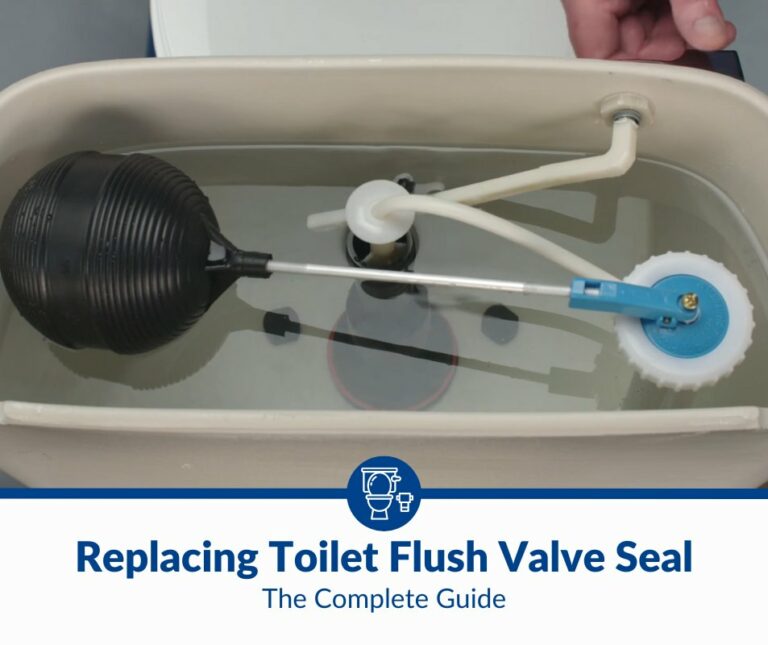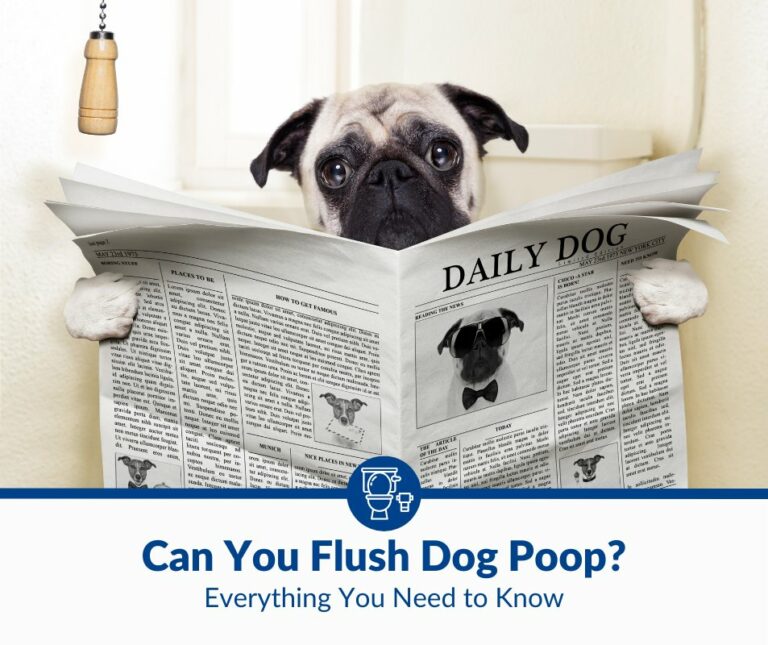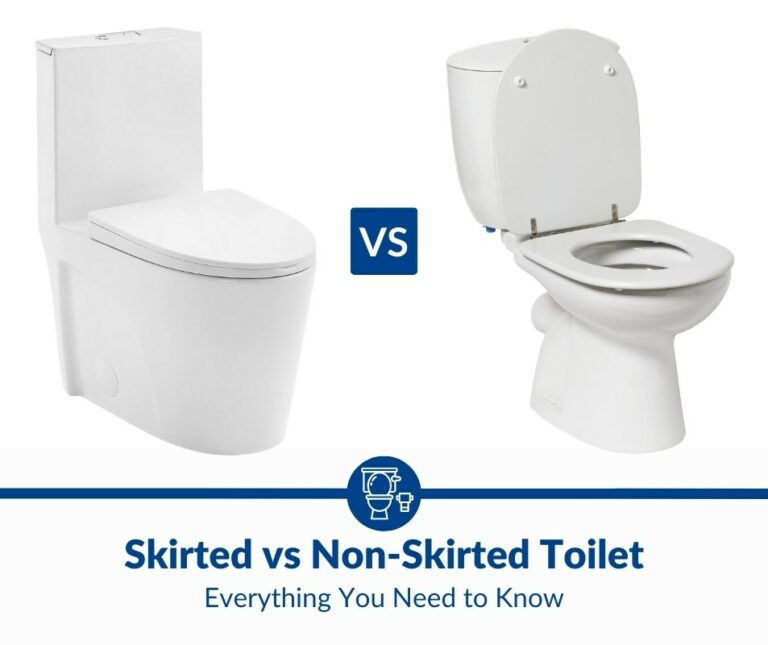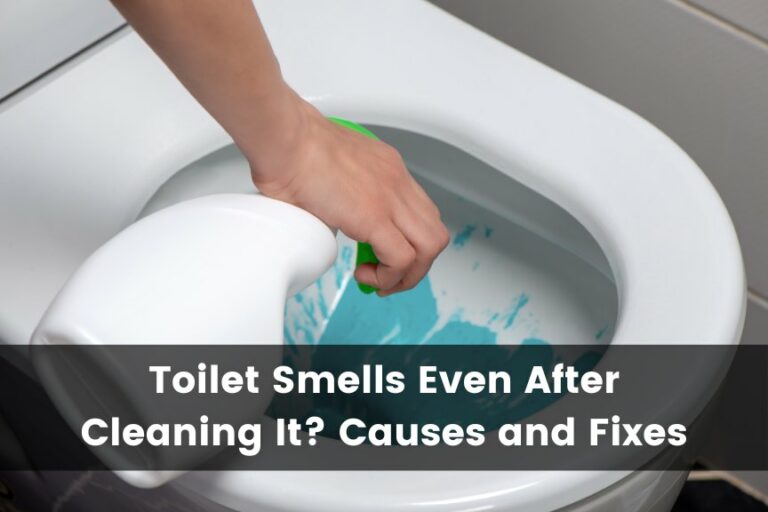Can You Put Fabuloso in the Toilet Tank?
Are you looking for a cost-effective, easy way to clean and deodorize your toilet? If so, you might wonder if putting Fabuloso in the toilet tank is safe.
You should not put Fabuloso in your toilet tank because it can damage your toilet’s seals, gaskets, and plastic and rubber components over time. To clean your toilet tank safely and effectively, consider vinegar, water, borax, hydrogen peroxide, and baking soda.
In this article, I’ll fully explain why Fabuloso can be so bad for your tank, and I’ll give you some tips to keep your toilet clean and fresh without it.
What To Expect if You Put Fabuloso in a Toilet Tank
Putting Fabuloso or other household cleaning products in a toilet tank is far from ideal. While you might get a good immediate result, it will eventually wreak havoc on your plumbing.
These are some of the potential negative consequences of doing so.
Damage to the Toilet Tank
Many household cleaning products, including Fabuloso, contain chemicals that can damage the materials used in toilet tanks, such as plastic or porcelain. These chemicals can discolor or even crack the tank, leading to potentially costly repairs.
The only time Fabuloso might work well in a tank is if it’s made of something more durable, like stainless steel. However, that’s mostly relegated to public toilets. So, for most homeowners, the rule still stands.
Damage to the Toilet Bowl
The chemicals in cleaning products can also discolor and damage the toilet bowl. While discoloration might not be a large problem for the tank, the bowl is a different story.
With time and continued use, the bowl can fade to an off-white color, making it look dirty even when it’s clean.
Damage to the Toilet’s Plumbing
Some all-purpose cleaning products, such as Fabuloso, can clog the toilet’s pipes and interfere with proper flushing.
The chemicals in Fabuloso may also damage the rubber flapper inside the toilet tank, which controls the water level in the bowl. This can cause leaks from your toilet and make it difficult to flush properly.
Health Risks
When a person uses the toilet, the chemicals from the cleaning product may come in contact with their skin or be inhaled. While Fabuloso is not particularly toxic, it can irritate the skin and respiratory tract.
It is important to use cleaning products as directed and to keep them out of reach of children and pets. To get the best results when cleaning a toilet, use a product specifically made to clean toilets.
Can You Put Toilet Cleaners in the Tank?
It is not recommended to put toilet cleaners in your toilet tank. Putting toilet cleaners in the tank could potentially damage the tank or the flushing system, as the chemicals in the cleaner could corrode or damage the materials used in these parts of the toilet.
Instead of putting toilet cleaners in the tank, it is generally better to follow the instructions on the label of the cleaner and use it in the bowl of the toilet as directed.
What Cleaner Is Safe for the Toilet Tank?
The safest cleaners for toilet tanks should contain mostly water and mild, natural surfactants. These products are also safe for most plumbing fixtures. They don’t contain harmful chemicals that could damage your toilet or impede its functioning.
Here is a list of natural cleaners that are safe to use in the toilet tank:
White Vinegar
White vinegar is a natural disinfectant and can be used to clean the inside of the toilet tank. It can be used diluted with water, or it can be used at full strength. Vinegar should not be mixed with any other cleaners in the tank, as they may react and create dangerous fumes.
To use white vinegar to clean a toilet tank, follow these steps:
- Get rid of any additional water in the tank. To do this, press the flush button on the toilet and then use a sponge or a towel to soak up any remaining liquid. Remember to close the water inlet to the tank.
- Pour about 3 gallons (11 liters) of white vinegar into the tank. To ensure that you use the correct amount, you can measure it out with a measuring cup.
- Using a toilet brush or scrub brush, thoroughly scour the inside of the tank. Be sure to scrub the surfaces near the bottom of the tank and any area that may be inaccessible by hand.
- Leave the vinegar for no less than one hour. This will allow the vinegar to work its way into all the crevices and corners of the tank, removing any dirt, grime, or stains.
- Flush the toilet several times to ensure all traces of vinegar are gone.
- Wipe the inside of the tank with a clean, dry cloth to remove any remaining vinegar or debris.
- Repeat the process if necessary. If the tank is particularly dirty or has heavy stains, it may take a few tries to get it completely clean.
Using white vinegar to clean your toilet tank, you can effectively remove dirt, grime, and stains without harsh chemicals. This is a safe and natural way to keep your toilet clean and fresh.
Baking Soda
Baking soda is a natural deodorizer and can be used to clean the inside of the toilet tank. It is not as effective as vinegar, but it can be used with vinegar to get better results.
To clean a toilet tank using baking soda, you can follow these steps:
- Flush the toilet to empty the tank. If you have a dual-flush toilet, hold the lever down for a full flush to get as much water out of the toilet tank as possible.
- Mix the cleaning solution. Mix 1/2 cup (90 g) of baking soda and 1/4 cup (59 ml) of white vinegar in a small bowl. You might see some fizzing and bubbling when you mix the ingredients. This is perfectly normal, so don’t fret.
- Apply the cleaning solution. Pour the cleaning solution into the toilet tank. Be certain to spread the coating uniformly throughout the entirety of the tank, including the walls and base.
- Let the solution sit. Let the solution sit in the tank for at least thirty minutes before flushing it down. This will allow the baking soda and vinegar to work together to remove stains and break down dirt or grime.
- Scrub the tank. Use a toilet or scrub brush to scour the inside of the tank, making sure to scrub any areas that are particularly dirty or stained.
- Flush the tank. Flush the toilet a few times to rinse the cleaning solution out of the tank.
- Repeat as needed. If the tank is particularly filthy, it may be necessary to repeat the steps several times to get it completely clean.
Overall, cleaning a toilet tank with baking soda is a simple and effective way to remove stains and grime. It’s also a natural and non-toxic alternative to harsh chemicals. Follow these instructions carefully and wear gloves to protect your hands while cleaning.
Lemon Juice
Lemons are an excellent natural cleaner for the toilet tank. They can be used to clean and disinfect the inside of the tank as well as to eliminate odors.
Lemons have a powerful chemical called citric acid that effectively kills germs and can clean surfaces like porcelain.
To use lemon juice to clean your toilet tank, follow the following steps:
- Empty the tank by closing the inlet and flushing the toilet. Use a dry cloth to soak up any remaining water.
- Once the tank is empty, add a generous amount of lemon juice into the tank. To save money, you can mix this with water to increase its volume.
- Using a scrub brush or sponge, scrub the inside of the tank, making sure to reach every surface, including the sides and bottom.
- Rinse the tank thoroughly with clean water.
- If you notice any stains or mineral deposits that are difficult to remove, apply a mixture of equal parts lemon juice and baking soda to the area. Scrub it with a brush and rinse thoroughly with clean water.
- Once the tank is clean, reopen the inlet and flush the toilet a few times to rinse any remaining lemon juice or cleaning solution.
Borax
Borax is a natural mineral salt that has many uses around the home. It can be used as a laundry booster, an ant killer, and even to make homemade cleaning products. Borax is also great for cleaning your toilet tank because it can remove stains and residue from hard water build-up.
To use borax, follow these steps:
- Empty the toilet tank by flushing the toilet a few times. Remember to close the water inlet.
- Mix half a cup (90 g) of borax solution with one gallon (3.79 liters) of hot water.
- Use a scrub brush or sponge to scrub the inside of the tank with the borax solution, paying particular attention to any dirty areas or areas with hard water stains.
- Rinse the tank thoroughly with clean water.
- Once the tank is clean, refill it with water and flush the toilet a few times to rinse out the bowl and ensure that the borax solution has been completely removed.
It’s important to note that borax is a strong cleaning agent and can be abrasive, so use it with caution. It’s also a good idea to wear gloves when using borax to protect your skin.
Hydrogen Peroxide
Hydrogen peroxide is a strong cleaning agent that works well on many surfaces around your home. It is especially effective for cleaning your toilet tank because it can remove hard water stains and eliminate odors.
You can use hydrogen peroxide to clean your toilet tank by following these steps:
- Turn off the water supply to the toilet. This will prevent water from entering the tank when you start cleaning.
- Empty your toilet tank by flushing it.
- Mix equal parts of hydrogen peroxide and water in a spray bottle.
- Spray the mixture of hydrogen peroxide and water inside the toilet tank, making sure to coat all surfaces.
- Allow the blend to remain in the toilet tank for approximately 15-30 minutes to let it do its purifying trick.
- Use a toilet brush to clean the tank’s inner walls and remove any dirt or discoloration.
- Flush the toilet to rinse the tank and remove any remaining cleaning solution.
- Turn the water back on and check whether there are any leaks.
It’s important to use caution when using hydrogen peroxide, as it can be harmful if ingested or if it comes into contact with your skin or eyes. Be sure to wear gloves and protective eyewear when handling the solution and keep it out of reach of children and pets.
Additionally, be sure to use a diluted solution of hydrogen peroxide, as concentrated hydrogen peroxide can cause damage to certain surfaces.
Coca-Cola
Cleaning a dirty toilet with coke is a hack that can be used to remove specific stains like limescale or rust. However, it’s not recommended as a regular cleaning method, and even then should be used sparingly.
It’s important to keep in mind that continuously using coke as your only toilet-cleaning solution can lead to staining and sugary residue in the bowl. I recommend this only as a last-ditch effort or when you have absolutely nothing else to use.
To clean your toilet bowl with Coke, follow these steps:
- Carefully pour the Coke along the edges of your toilet bowl, ensuring that it covers any stained areas.
- Allow the Coke to sit overnight, giving it ample time to work on the stains.
- Flush the toilet in the morning to rinse away the Coke and any stains that have been lifted.
It’s important to note that this method may not be effective for all types of stains or for heavy buildup, and it’s always good to use a recommended cleaning solution for your toilet bowl.
Products You Should Never Put Inside the Toilet Tank
Certain products should never be placed inside the toilet tank, as they can damage the toilet or cause other problems. Here is a list of products that you should avoid putting inside the toilet tank:
- Chemical cleaners. Many chemical cleaners, such as bleach and toilet bowl cleaners, corrode the rubber seals and gaskets, causing leaks and other problems.
- Detergents. Detergents like dishwashing liquid or laundry detergent can create too many suds, which can cause the tank or toilet bowl to overflow.
- Oil or grease. Oil or grease should never be poured inside the toilet tank.
- Non-biodegradable materials. Non-biodegradable materials, such as plastic, rubber, or metal, should not be placed inside the toilet tank as they clog the toilet.
Avoiding these products and materials will keep your toilet functioning properly and prevent potential problems.
Can You Use Other Types of Cleaning Products For Your Toilet?
There are commercial systems available that allow you to safely use chemical tablets or other commercial cleaners in the tank.
Some of them include:
Fluidmaster 8300 Flush ‘n Sparkle System
This flush-only toilet tank cleaner installs in minutes and requires no plumbing, making it easy to use. The refill cartridge lasts up to 3 months, and its powerful scrubbing action cleans without damaging parts and will not harm your toilets.
Kaboom Scrub Free Toilet Bowl Cleaner System
The Kaboom Scrub Free Toilet Tank Cleaner is a powerful and convenient solution for keeping your toilet tank clean and stain-free. Its bleach-based formula easily removes tough dirt buildup and stains.
With one easy-to-install device and two refill pouches, you’ll have up to six months in total or three months per pouch of cleaning power, based on your usage habits.
How To Make Your Toilet Tank Smell Amazing
A toilet tank can start to smell bad if you do not properly maintain it. Here are a few options you can try to keep your toilet smelling fresh:
- Add a few drops of essential oils. You can add a few drops of your favorite essential oils, such as peppermint or lemon, to the toilet tank. The oils will release a pleasant aroma every time the toilet is flushed.
- Use a toilet tank tablet or freshener. These products are placed in the toilet tank and release a pleasant scent every time the toilet is flushed. Some options are available in various scents, such as lavender or citrus.
- Try a homemade solution. You can mix white vinegar and baking soda together and pour the mixture into the toilet tank. The baking soda will deodorize the tank, and the vinegar will kill bacteria or germs.
It’s important to remember that these solutions are meant to mask odors and freshen the toilet rather than eliminate the source of the problem. If there are persistent strong odors or other issues with your toilet, you should call a plumber to diagnose and fix the problem.
How Often Should You Clean the Toilet Tank?
It is recommended to clean your toilet tank as part of regular bathroom maintenance.
The frequency of cleaning the toilet tank depends on the usage and the water quality, but in general, it’s good practice to clean it every 3-6 months.
However, it’s also important to inspect it more often for any signs of discoloration, buildup, or leaks, which may indicate the need for more frequent cleaning.
Regularly cleaning the toilet’s tank can help prevent the buildup of minerals and bacteria, which can cause damage to the toilet and affect its performance over time.
Conclusion
Fabuloso in toilet tanks can cause serious problems over time. There are various non-toxic, natural, and inexpensive cleaners that you can use in your toilet tank, including baking soda, hydrogen peroxide, and white vinegar.
While not as effective as commercial products specifically designed for this purpose, these natural cleaners are safe, inexpensive, and easy to use.







